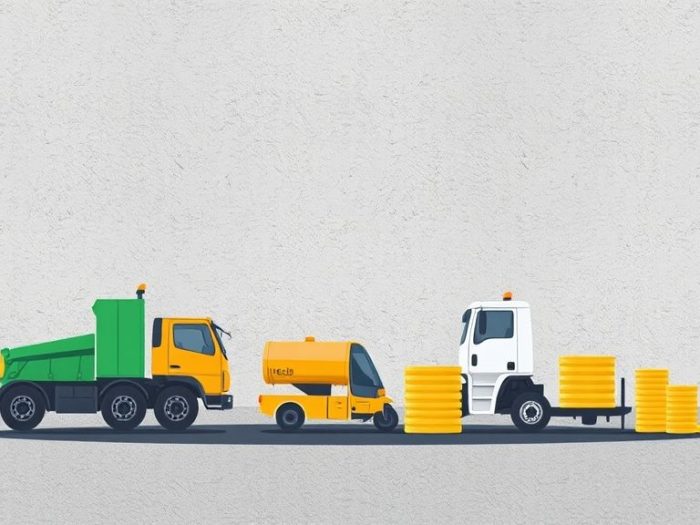Equipment leasing offers an alternative investment opportunity where you can potentially
generate steady income from leasing equipment to businesses. While returns of 8-12% are a target
and not guaranteed, this asset class can provide attractive yields. This article explores how
equipment leasing investments work and the key factors to consider.
Understanding Equipment Leasing
Equipment leasing involves purchasing equipment and then leasing it to businesses that need it.
Instead of buying the equipment outright, businesses pay regular lease payments to use it.
Types of Equipment Leased
A wide variety of equipment can be leased, including:
- Construction equipment (bulldozers, cranes)
- Medical equipment (MRI machines, X-ray machines)
- Manufacturing equipment (machinery, robotics)
- Transportation equipment (trucks, trailers)
- Office equipment (computers, copiers)
How Equipment Leasing Investments Work
- Equipment Purchase: You purchase the equipment.
-
Lease Agreement: You enter into a lease agreement with a business, outlining the lease terms, including:
- Lease duration
- Lease payments
- Maintenance responsibilities
- Lease Payments: The business makes regular lease payments to you.
- Equipment Return: At the end of the lease, the equipment is either returned to you or the business may have the option to purchase it.
Potential Returns
Equipment leasing can potentially generate returns in the range of 8-12% annually, but this is not guaranteed. Returns depend on:
- Lease Rates: The amount you charge for lease payments.
- Equipment Utilization: How consistently the equipment is leased.
- Equipment Depreciation: The rate at which the equipment loses value.
- Maintenance Costs: Expenses for maintaining and repairing the equipment.
- Default Risk: The risk that the business doesn’t make lease payments.
Ways to Invest in Equipment Leasing
1. Direct Ownership and Leasing
You purchase the equipment and manage all aspects of leasing it yourself.
-
Pros:
- Potential for higher returns.
- Full control.
-
Cons:
- Most time-consuming.
- Requires industry knowledge and management expertise.
2. Equipment Leasing Companies
Invest in publicly traded companies that own and lease equipment.
-
Pros:
- Passive investment through the stock market.
- Relatively liquid.
-
Cons:
- Returns tied to the company’s performance.
3. Equipment Leasing Platforms
Some platforms offer opportunities to invest in specific equipment leasing deals.
-
Pros:
- Easier entry point than direct ownership.
-
Cons:
- Platform fees and risks.
- Varying levels of transparency.
Risks of Equipment Leasing Investments
- Default Risk: The business may not be able to make lease payments.
- Equipment Damage: The equipment could be damaged during use.
- Obsolescence: The equipment could become outdated or obsolete.
- Maintenance Costs: Unexpected repairs can be costly.
- Depreciation: Equipment depreciates over time, reducing its value.
- Economic Downturns: Demand for leased equipment can decrease during recessions.
Important Considerations
- Due Diligence: Thoroughly research the equipment type, industry demand, and the lessee’s creditworthiness.
- Lease Terms: Carefully review the lease agreement.
- Maintenance and Insurance: Factor in maintenance costs and insurance expenses.
- Equipment Value: Understand the depreciation schedule of the equipment.
- Legal and Regulatory Compliance: Ensure compliance with all applicable laws and regulations.
Conclusion
Equipment leasing investments offer the potential for attractive yields and diversification.
However, they also involve risks that need to be carefully considered. Thorough research,
prudent management, and a clear understanding of the industry are essential for success.
Related Keywords
Equipment leasing, equipment lease investment, lease equipment for income, passive income,
alternative investments, equipment financing, commercial equipment leasing, industrial
equipment leasing, lease income, equipment rental.
Frequently Asked Questions (FAQ)
1. What is equipment leasing?
Equipment leasing involves purchasing equipment and then leasing it to businesses
that need it, instead of them buying it outright.
2. What types of equipment can be leased?
A wide variety of equipment can be leased, including construction, medical,
manufacturing, transportation, and office equipment.
3. How do equipment leasing investments generate income?
Income is generated through regular lease payments made by the business using the
equipment.
4. What are the potential returns from equipment leasing?
Potential returns can be in the range of 8-12% annually, but this is not
guaranteed and depends on factors like lease rates, utilization, and equipment
depreciation.
5. What are the different ways to invest in equipment leasing?
You can invest through direct ownership and leasing, equipment leasing companies
(publicly traded), or equipment leasing platforms.
6. What is involved in direct ownership and leasing?
Direct ownership involves purchasing the equipment and managing all aspects of
leasing it, including finding lessees, handling contracts, and maintenance.
7. How do publicly traded equipment leasing companies operate?
These companies own and lease equipment to businesses, and you invest in their
stock.
8. What are equipment leasing platforms?
These are online platforms that connect investors with specific equipment
leasing opportunities.
9. What are the risks of equipment leasing investments?
Risks include default risk, equipment damage, obsolescence, maintenance costs,
depreciation, and economic downturns.
10. What are some important considerations before investing in equipment leasing?
Consider due diligence, lease terms, maintenance and insurance, equipment value,
and legal and regulatory compliance.



